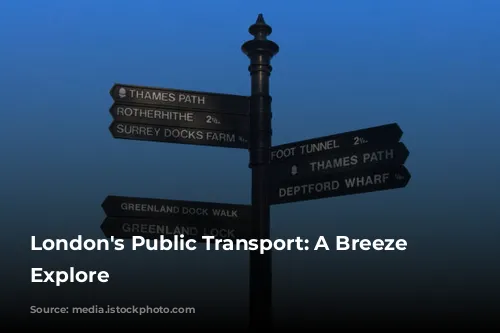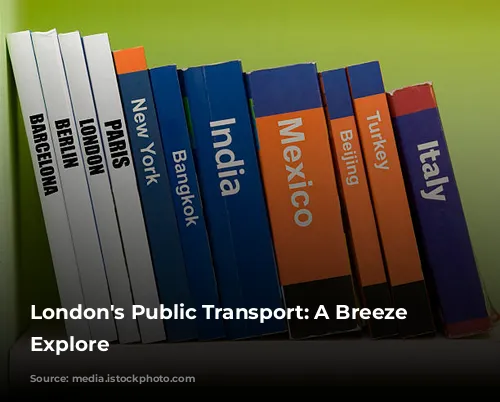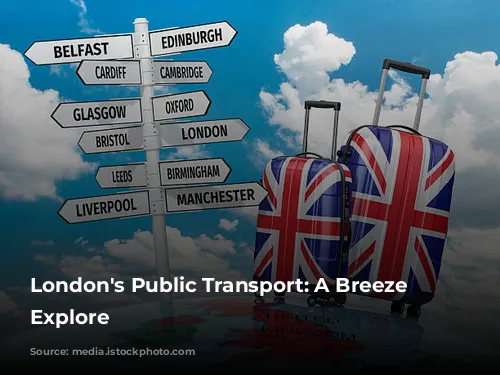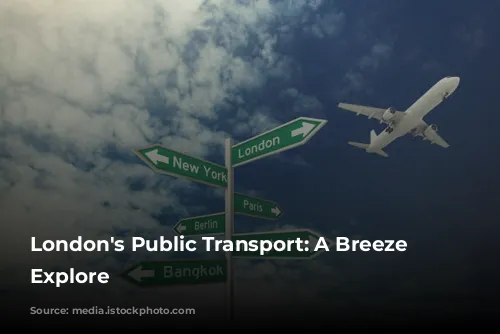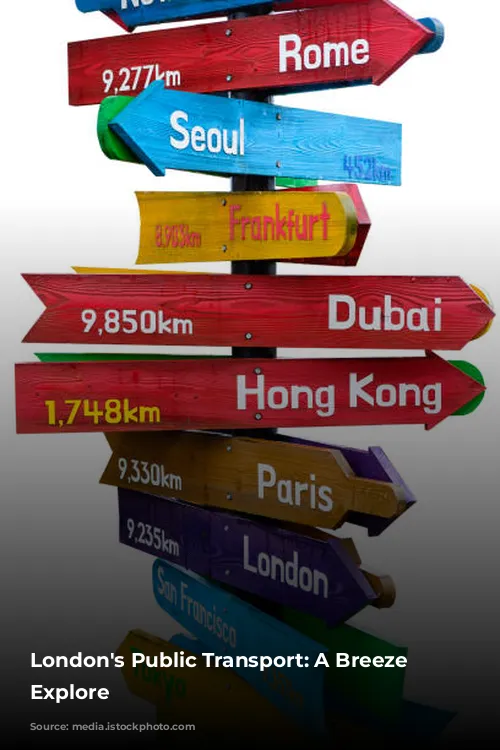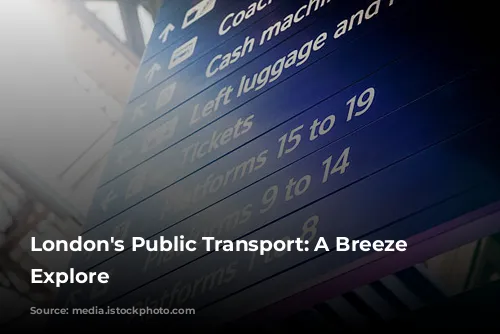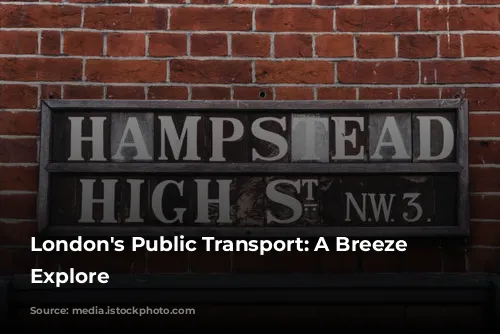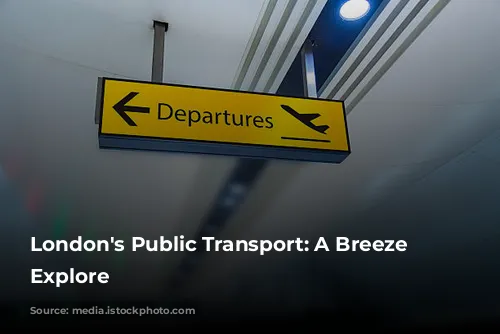London’s public transportation system is a marvel! Getting around the city is effortless, leaving you free to explore without the hassle of driving or relying on ride-sharing services. Google Maps is your best friend for navigating London’s public transportation. Simply input your starting point and destination, select the public transport icon, and voilà! You’ll see all the available Tube and bus routes, complete with departure and arrival times.
But hold on, there’s more! London is also a very walkable city. Strolling through London’s vibrant streets, alongside locals and fellow tourists, is a joy. And fear not, solo female travelers! London is a safe city, and I felt perfectly comfortable exploring on foot, even when walking alone.
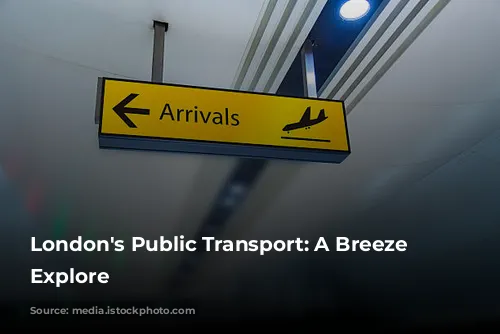
How to Pay for Public Transportation
London offers a variety of options for paying for public transportation. While Transport for London’s website provides a comprehensive overview, I’ll give you a quick rundown with my personal insights.
Oyster Cards are the classic way to pay for public transport in London. They’re blue plastic cards, similar in size to a credit card. You can purchase them at any tube station, choosing from either a regular Oyster Card or a Visitor Oyster Card. Load your card with cash or credit, and you’re good to go! Remember, each person needs their own card. Oyster Cards are your key to seamless travel on the Tube, buses, and even trams. They come with a daily cap, so if you’re a frequent Tube rider (which you’ll likely be!), you’ll save money as the day progresses.
There’s a Visitor Oyster Card available, but it has fewer perks compared to the regular Oyster Card. For instance, you can’t load a Travelcard onto it. The main advantage is that you can have a Visitor Oyster Card shipped to your home before your trip. However, picking up a regular Oyster Card at any tube station is so easy, it’s hardly worth the hassle of getting a Visitor Oyster Card.
A game-changer in London is the acceptance of contactless payments on the Tube and buses. Forget the Oyster Card! Simply tap your contactless credit card or your digital wallet, such as Google Pay or Apple Pay, to pay for your journey. The daily cap applies to contactless payments as well, making it an even more budget-friendly option.
Travelcards are prepaid cards that offer unlimited travel within specific zones of London. If you’re planning an extended stay of seven days or more, a 7-day Travelcard is a fantastic way to save money. You can purchase and load a 7-day Travelcard onto a regular Oyster Card. However, they are not compatible with Visitor Oyster Cards. For trips shorter than seven days, stick with an Oyster Card or contactless payment.

London’s Underground: A Journey Through Time
The London Underground, affectionately nicknamed “the Tube,” is the world’s oldest subway system, dating back to 1863. It’s the fastest and most convenient way to get around London. I rely on it multiple times a day when exploring the city. While the Tube has undergone numerous upgrades over the years, many stations are not wheelchair accessible. However, accessible stations are clearly marked with the International Symbol of Access (ISA), an icon of a person in a wheelchair, on the Tube map.
Every time you enter a Tube station, you’ll need to tap your Oyster Card, contactless credit card, or digital wallet to pass through the turnstiles. Don’t forget to tap out as well! Each station has a map of the lines that run through it and the stops they make. So, before heading to a Tube station, locate the nearest stop for your destination.

Ride-Sharing Options: From Uber to Bolt
Uber, Lyft, and Bolt all operate in London, giving you convenient ride-sharing options. You can request a ride through their respective apps using cellular data or Wi-Fi. If you’re from the United States, Bolt might be a new name to you, as it doesn’t operate in North America. While I haven’t personally used Bolt in London yet, I highly recommend it based on my experience in Malta. It’s often cheaper than Uber and Lyft. Keep in mind that some people have reported longer wait times for Bolt rides in London, so if you’re in a rush, this might not be the best option. All three ride-sharing apps offer scheduled rides, which can be helpful for early morning rides to the airport or other situations where on-demand services might be limited.
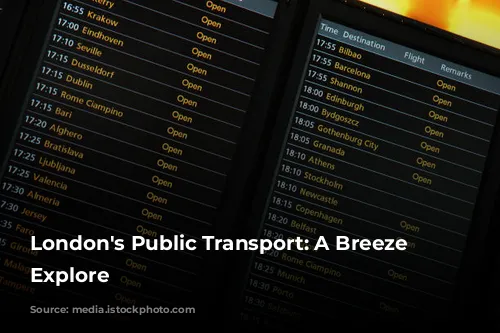
London’s Bike Paths: Explore the City on Two Wheels
London boasts a network of excellent bike paths, accommodating bicycles and scooters, including electric ones. Remember that bikes and scooters are not allowed on sidewalks. For details on bringing bikes and scooters on public transportation, visit the Transport for London (TfL) website. While cycling can be a fun way to explore, I wouldn’t recommend it for first-time visitors. Walking or using public transportation is often a more convenient and stress-free way to navigate London.
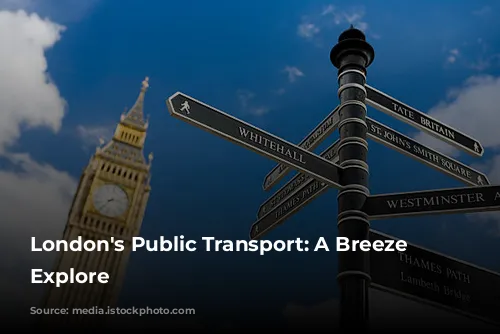
Embrace the Walkable City
London is a city made for walking! It’s a joy to stroll through the city, taking in the sights and sounds, and joining the throngs of people on foot. I relish walking 5-10 miles a day in London, and I love this aspect of London’s culture. Don’t let rain dampen your spirits! Londoners are resilient and embrace the rain with umbrellas, rain boots, and warm coats. I have a whole blog post dedicated to tips for visiting London in winter if you’re planning a trip during that season. Walking is a fantastic way to discover hidden gems that you might miss otherwise. You’ll stumble upon unique neighborhoods and charming locales that you wouldn’t have known about.
So, ditch the car and embrace the adventure of exploring London on foot, by Tube, or by bus. You’ll be pleasantly surprised by the ease and joy of getting around this remarkable city.
